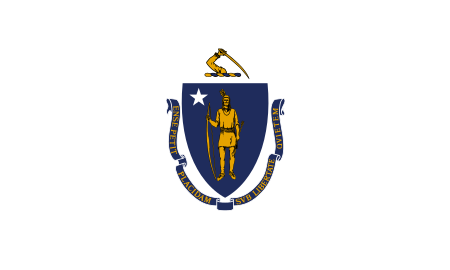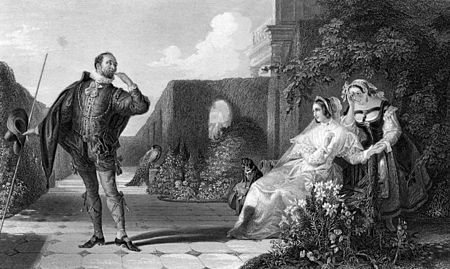Japanese Peruvians
| |||||||||||||||||||||||||||||||
Read other articles:

Andy Delort Delort berseragam Nice pada 2022Informasi pribadiNama lengkap Andy DelortTanggal lahir 9 Oktober 1991 (umur 32)Tempat lahir Sète, PrancisTinggi 1,82 m (5 ft 11+1⁄2 in)Posisi bermain PenyerangInformasi klubKlub saat ini Umm SalalNomor 9Karier junior1997–1999 FC Sète 341999–2000 Pointe Courte AC Sète2000–2002 FC Sète 342002–2003 Pointe Courte AC Sète2003–2008 FC Sète 34Karier senior*Tahun Tim Tampil (Gol)2008–2009 Ajaccio 0 (0)2009–2010 Nî…

Human settlement in Barcelona, Spain This article does not cite any sources. Please help improve this article by adding citations to reliable sources. Unsourced material may be challenged and removed.Find sources: Sants – news · newspapers · books · scholar · JSTOR (March 2022) (Learn how and when to remove this message) For other uses, see Sants (disambiguation). Casa Jaume Estrada (1906) on the neighbourhood's main artery, Carrer de Sants Sants is a nei…

Botok kelapa dalam bungkus daun pisang Botok tawon Botok adalah makanan khas Jawa yang terbuat awalnya dari ampas/bungkil kelapa yang sudah diambil sarinya (santan[1]). Pada awalnya botok yang terbuat dari ampas kelapa ini dimasak, agar ampas kelapa yang masih bergizi ini tidak dibuang. Oleh karena itu ampas kelapa ini kemudian dibumbui dengan cabai, garam, merica dan daun salam, dibungkus dalam daun pisang, yang kemudian dikukus dalam uap panas. Bothok pada saat ini dimodifikasi juga de…

US Coast Guard Station in Nantucket, Massachusetts US Coast Guard Station Brant PointPart of 1st DistrictBrant Point, Nantucket (CDP), Massachusetts A view of the station from Nantucket HarborCoordinates41°17′21″N 70°5′30″W / 41.28917°N 70.09167°W / 41.28917; -70.09167TypeCoast Guard StationSite informationOwnerUnited States Coast GuardOpen tothe publicYesSite historyIn useJuly 1939-Present United States Coast Guard Station Brant Point is locate…

Vous lisez un « article de qualité » labellisé en 2019. Il fait partie d'un « thème de qualité ». Pour les articles homonymes, voir Keats. John Keats Portrait de John Keats par William Hilton. Données clés Naissance 31 octobre 1795 Finsbury Pavement, Londres, Grande-Bretagne Décès 24 février 1821 (à 25 ans) Rome, États pontificaux Activité principale Poète Auteur Langue d’écriture Anglais Mouvement Romantisme Genres Poésie modifier J…

2001 television film directed by Steve Boyum MotocrossedPromotional advertisementGenreActionAdventureBased onTwelfth Nightby William ShakespeareWritten byAnn AustenDouglas SloanDirected bySteve BoyumStarringAlana AustinRiley SmithMary-Margaret HumesTrever O'BrienTheme music composerChristopher BradyCountry of originUnited StatesOriginal languageEnglishProductionProducerGeorge W. PerkinsCinematographyJoão FernandesEditorCraig BassettRunning time92 minutesProduction companiesFilm RomanStu Segall …

È caduta una donnaIsa Miranda e Rossano Brazzi in una foto di scena del filmLingua originaleitaliano Paese di produzioneItalia Anno1941 Durata72 min Dati tecniciB/Nrapporto: 1,37:1 Generedrammatico RegiaAlfredo Guarini SoggettoMilly Dandolo (romanzo) SceneggiaturaUgo Betti, Sandro De Feo, Alfredo Guarini, Ercole Patti, Vincenzo Talarico, Piero Tellini, Cesare Zavattini ProduttoreAttilio Fattori, ispettore di produzione Franco Magli Casa di produzioneScalera Film Distribuzione in italianoScalera…

Pier Dionigi Pinelli Presidente della Camera dei deputatiDurata mandato20 dicembre 1849 –25 aprile 1852 PredecessoreLorenzo Pareto SuccessoreUrbano Rattazzi Ministro dell'interno del Regno di SardegnaDurata mandato15 agosto 1848 –11 ottobre 1848 MonarcaCarlo Alberto di Savoia Capo del governoCesare Alfieri di Sostegno PredecessoreGiacomo Plezza Durata mandato11 ottobre 1848 –3 dicembre 1848 Capo del governoEttore Perrone di San Martino SuccessoreRi…

Peta menunjukkan lokasi Concepcion Concepcion adalah munisipalitas yang terletak di provinsi Romblon, Filipina. Pada tahun 2010, munisipalitas ini memiliki populasi sebesar 4.166 jiwa dan 1.050 rumah tangga. Pembagian wilayah Secara administratif Concepcion terbagi menjadi 9 barangay, yaitu: Bachawan Calabasahan Dalajican Masudsud Poblacion Sampong San Pedro (Agbatang) San Vicente Masadya Pranala luar Philippine Standard Geographic Code Diarsipkan 2012-04-13 di Wayback Machine. 1995 Philippine C…

普密蓬·阿杜德ภูมิพลอดุลยเดช泰国先王普密蓬·阿杜德(官方肖像) 泰國國王統治1946年6月9日-2016年10月13日(70年126天)加冕1950年5月5日前任阿南塔玛希敦繼任玛哈·哇集拉隆功总理见列表出生(1927-12-05)1927年12月5日 美國马萨诸塞州剑桥奥本山醫院(英语:Mount Auburn Hospital)逝世2016年10月13日(2016歲—10—13)(88歲) 泰國曼谷西里拉醫院安葬曼谷僧王�…

This article's factual accuracy is disputed. Relevant discussion may be found on the talk page. Please help to ensure that disputed statements are reliably sourced. (May 2017) (Learn how and when to remove this message) Operating system BlackBerry Tablet OSDeveloperBlackBerry LimitedOS familyQNX (Unix-like)Working stateDiscontinuedSource modelClosed source, some open source componentsInitial releaseApril 19, 2011Latest release WiFi 2.1.0.1917 (March 31, 2014; 10 years ago (2014…

提示:此条目页的主题不是中華人民共和國最高領導人。 中华人民共和国 中华人民共和国政府与政治系列条目 执政党 中国共产党 党章、党旗党徽 主要负责人、领导核心 领导集体、民主集中制 意识形态、组织 以习近平同志为核心的党中央 两个维护、两个确立 全国代表大会 (二十大) 中央委员会 (二十届) 总书记:习近平 中央政治局 常务委员会 中央书记处 中�…

Flying boat crash in Greenland resulting in 15 casualties 1962 Goodthab Catalina crashA Consolidated PBY-5A similar to the accident aircraftAccidentDate12 May 1962SummarySank on landingSiteGodthab harbourAircraftAircraft typeCanadian-Vickers PBY-5A CansoOperatorEastern Provincial Airways on behalf of Greenlandair (now Air Greenland)RegistrationCF-IHAFlight originKangerlussuaq Airport, GreenlandDestinationGodthåb, GreenlandPassengers18Crew3Fatalities15Survivors6 On 12 May 1962, an Eastern P…

Oh Ha-na Rekam medali Anggar putri Mewakili Korea Selatan Permainan Olimpiade 2012 London Floret tim Kejuaraan Dunia 2010 Paris Floret tim Pesta Olahraga Asia 2010 Guangzhou Floret tim Universiade 2003 Daegu Floret tim 2007 Bangkok Floret tim Oh Ha-naHangul오하나 Alih AksaraO HanaMcCune–ReischauerO Hana Dalam nama Korea ini, nama keluarganya adalah Oh. Oh Ha-na (Pengucapan Korea: [o.ɦa.na]; lahir 8 Januari 1985 di Seongnam, Gyeonggi-do) adalah seorang atlet anggar putri asal Kor…

This article has multiple issues. Please help improve it or discuss these issues on the talk page. (Learn how and when to remove these template messages) This article relies excessively on references to primary sources. Please improve this article by adding secondary or tertiary sources. Find sources: Maxwell Lord – news · newspapers · books · scholar · JSTOR (October 2021) (Learn how and when to remove this message) This article may be written from a fan…

Defensive line used by Finland Mannerheim LineKarelian Isthmus The Mannerheim Line from the Gulf of Finland to Lake LadogaTypeDefensive lineSite informationControlled byFinlandSite historyBuilt1920–1924, 1932–1939In use1939–1940MaterialsWood, boulders, concrete, steel, natural featuresBattles/warsWinter War The Mannerheim Line (Finnish: Mannerheim-linja, Swedish: Mannerheimlinjen) was a defensive fortification line on the Karelian Isthmus built by Finland against the Soviet Union…

一中同表,是台灣处理海峡两岸关系问题的一种主張,認為中华人民共和国與中華民國皆是“整個中國”的一部份,二者因為兩岸現狀,在各自领域有完整的管辖权,互不隶属,同时主張,二者合作便可以搁置对“整个中國”的主权的争议,共同承認雙方皆是中國的一部份,在此基礎上走向終極統一。最早是在2004年由台灣大學政治学教授張亞中所提出,希望兩岸由一中各表的�…

This article needs additional citations for verification. Please help improve this article by adding citations to reliable sources. Unsourced material may be challenged and removed.Find sources: Borders of France – news · newspapers · books · scholar · JSTOR (October 2018) (Learn how and when to remove this message) Political boundaries between France and neighboring territories France and its territories The French Republic[1] has terrestrial bor…

Losing candidate publicly acknowledging they lost an election For territorial concessions in geopolitics, see Concessions and leases in international relations. The examples and perspective in this article deal primarily with the United States and do not represent a worldwide view of the subject. You may improve this article, discuss the issue on the talk page, or create a new article, as appropriate. (November 2018) (Learn how and when to remove this message) In politics, a concession is the ac…

American college basketball season This article needs additional citations for verification. Please help improve this article by adding citations to reliable sources. Unsourced material may be challenged and removed.Find sources: 2009–10 Indiana Hoosiers men's basketball team – news · newspapers · books · scholar · JSTOR (October 2010) (Learn how and when to remove this message) 2009–10 Indiana Hoosiers men's basketballConferenceBig Ten ConferenceReco…





